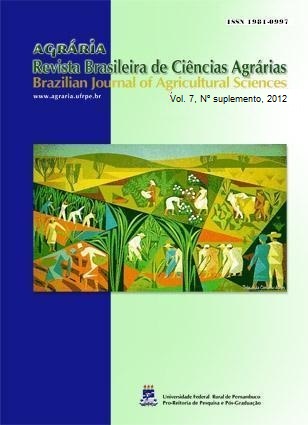Occurrence of pests on genetically modified (Bt) and conventional cotton
DOI:
https://doi.org/10.5039/agraria.v7isa2248Keywords:
Bacillus thunringiensis, Gossypium, transgenicsAbstract
The study aimed to evaluate the occurrence of pest and management of cotton genetically modified with the introduction of the bacterium Bacillus thunringiensis compared to conventional cotton in the ‘Cerrado’ region, installing the field experiment in 2007/2008 in Chapadão do Sul-MS. The experimental design was randomized blocks in a 2 x 3 factorial, with two managements of insecticides (with and without insecticides to control lepidopteran) and 3 modes of use of cultivars: 100% transgenic (NUOPAL), 100% non transgenic (Deltaopal ) and interior area with transgenic (80% NUOPAL) with non-transgenic border (20% Deltaopal) with five replications. Evaluations were performed weekly of pest infestation, observing in 15 plants per plot the number of Alabama argillacea, Heliothis virescens and Spodoptera frugiperda. Based on these results it was concluded that: the occurrence of A. argillacea and H. virescens was lower in treated transgenic cultivar. There were no differences between transgenic and conventional farming on the occurrence of S. frugiperda.



